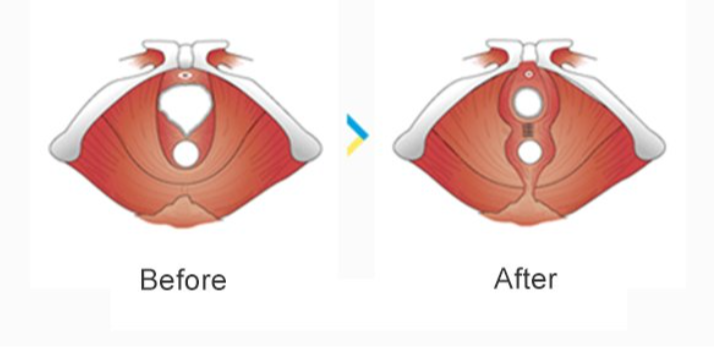Before delving deep into hymenoplasty, let’s first understand what hymen is. A hymen is a thin pinkish membrane that partially blocks the vaginal entrance. It is located just inside the vagina, about half an inch inside. It is in fact part of the vulva which is the gateway to vagina. Though it is difficult to say what the exact function of the hymen is, it has been proposed as a vaginal barrier against external sources of infection until puberty.

What is hymenoplasty?
Hymenoplasty is the way to re-establish intactness and integrityof the torn hymen . Hymenoplasty is also referred to as hymenorrhaphy,hymen reconstruction, hymen repair, hymen restoration, hymen surgery and revirgination.
Different procedures to perform hymenoplasty?
The first step to do the procedure is to fix up an appointment with the doctor to discuss the procedure and clear any doubts regarding the procedure. It is imperative to make your expectations clear and concise. The doctor will give you a complete picture as to what the surgery is all about along with instructions to prepare for the procedure. The choice of the procedure is decided by the surgeon based on the desired outcome. Mainly there are three ways by which hymenoplasty is done. The first one is:
The basic technique:
In this method, the remains of the hymen are stitched back together. In order to prevent pain and discomfort, a local or general anesthesia is administered. The torn parts of the hymen are then sown together. The stitches used are dissolvable. The duration of the procedure is 30 to 40 minutes and is usually done as a day care procedure.
The Alloplant technique:
The technique is generally used when the remnants cannot be stitched back together. The surgeon will insert a biomaterial and this tear-through material will function as the hymen. The procedure is done under loca/general anesthesia.
Hymen reconstruction:
As the name indicates, in this procedure, the hymen is reconstructed by using tissues from the lip of the vagina. It is to be noted that after this procedure you should abstain from sexual intercourse for a minimum of three months.
All techniques achieve the same goal of forming adhesions between hymen remnants and narrowing the introitus.
Recovery after the procedure:
The patient will be observed for a couple of hours in the postoperative room after the procedure. If you are conscious with no abnormal bleeding, you can urinate by yourself, then you may be allowed to return home. However, some patients may be asked to stay in the hospital overnight in order to avoid retention of urine especially in the first day after the surgery. In such cases, a Foley catheter may be inserted.
There may be mild discomfort for a couple of days after the procedure and it is treated with oral pain medications. Apart from the pain medication, you may be given an anti-inflammatory and an antibiotic. It is important to take rest until full recovery as you may experience dizziness caused by the intravenous (IV) sedation and anesthesia.
Wound care involves gentle cleaning by flushing or washing out with water or a medicated solution after urination and defecation. You may be advised to take sitz bath thrice daily to reduce pain and for hygiene. You can take shower the next day, but public pools, hot-tubs and saunas should be avoided for the next four weeks to prevent infection. After one-two days, you are expected to clean the perineum area with soap daily.
There may be light reddish bleeding from vagina for one to two weeks post procedure, you can use a sanitary napkin to monitor the bleeding
It is advisable to avoid tampons during the first one to two menstrual cycles to avoid irritation of the incisions while they are healing. You may need to take a couple of days off from office depending on the pain in the first one or two weeks following the procedure and avoid strenuous work to enable the wound to heal faster. You should not engage in sexual activity for approximately four weeks after hymenoplasty. By week six to eight, there will have complete healing and return to normal activities.
Who needs a hymenoplasty?
There are a wide variety of reasons for women resorting to hymenoplasty. Some of the reasons for having hymenoplasty may include:
Cultural or religious reasons:
In some cultures an intact hymen is considered as a signifier of chastity of a woman. Hymen can be broken during a sexual intercourse or otherwise, so having a cosmetic surgery to restore the hymen is a way of proving chastity.
Psychological effect:
If a woman has suffered a sexual abuse, it is likely that her hymen would have torn. In order to undo the psychological trauma, some women choose to undergo hymenoplasty as a treatment to restore them physically and mentally to the time before the abuse.
Hymen injury:
In some cases, hymen can tear before the first intercourse, for instance use of tampons or vigorous exercise. If hymen tore because of such activities, hymenoplasty offers a surgical solution.
Revirgination:
A woman may wish to have her hymen reconstructed (if already broken) when she begins a relationship with a new partner or as a gift for her spouse at their 25th wedding anniversary.
For Enquiries and Online Appointments
For more detailed information about Hymenoplasty, please send us a message today.

